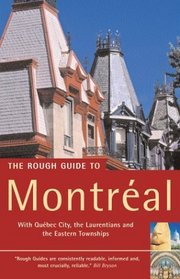Search -
Rough Guide to Montreal 2 (Rough Guide Travel Guides)
Rough Guide to Montreal 2 - Rough Guide Travel Guides
Author:
INTRODUCTION Montréal is by far Canada’s most cosmopolitan city. Toronto may have the country’s economic power and Vancouver its most majestic scenery, but the centuries-old marriage of English and French cultures that defines Montréal has given the city an allure and dynamic unique to North America – a captivating atmo... more »
Author:
INTRODUCTION Montréal is by far Canada’s most cosmopolitan city. Toronto may have the country’s economic power and Vancouver its most majestic scenery, but the centuries-old marriage of English and French cultures that defines Montréal has given the city an allure and dynamic unique to North America – a captivating atmo... more »
ISBN-13: 9781843531951
ISBN-10: 184353195X
Publication Date: 3/15/2004
Pages: 256
Rating: 4
ISBN-10: 184353195X
Publication Date: 3/15/2004
Pages: 256
Rating: 4
4.3 stars, based on 4 ratings
Genres:
- Travel >> Canada >> General
- Travel >> Canada >> Cities >> Montreal
- Travel >> Canada >> Provinces >> Quebec
- Travel >> Guidebook Series >> Rough Guide




